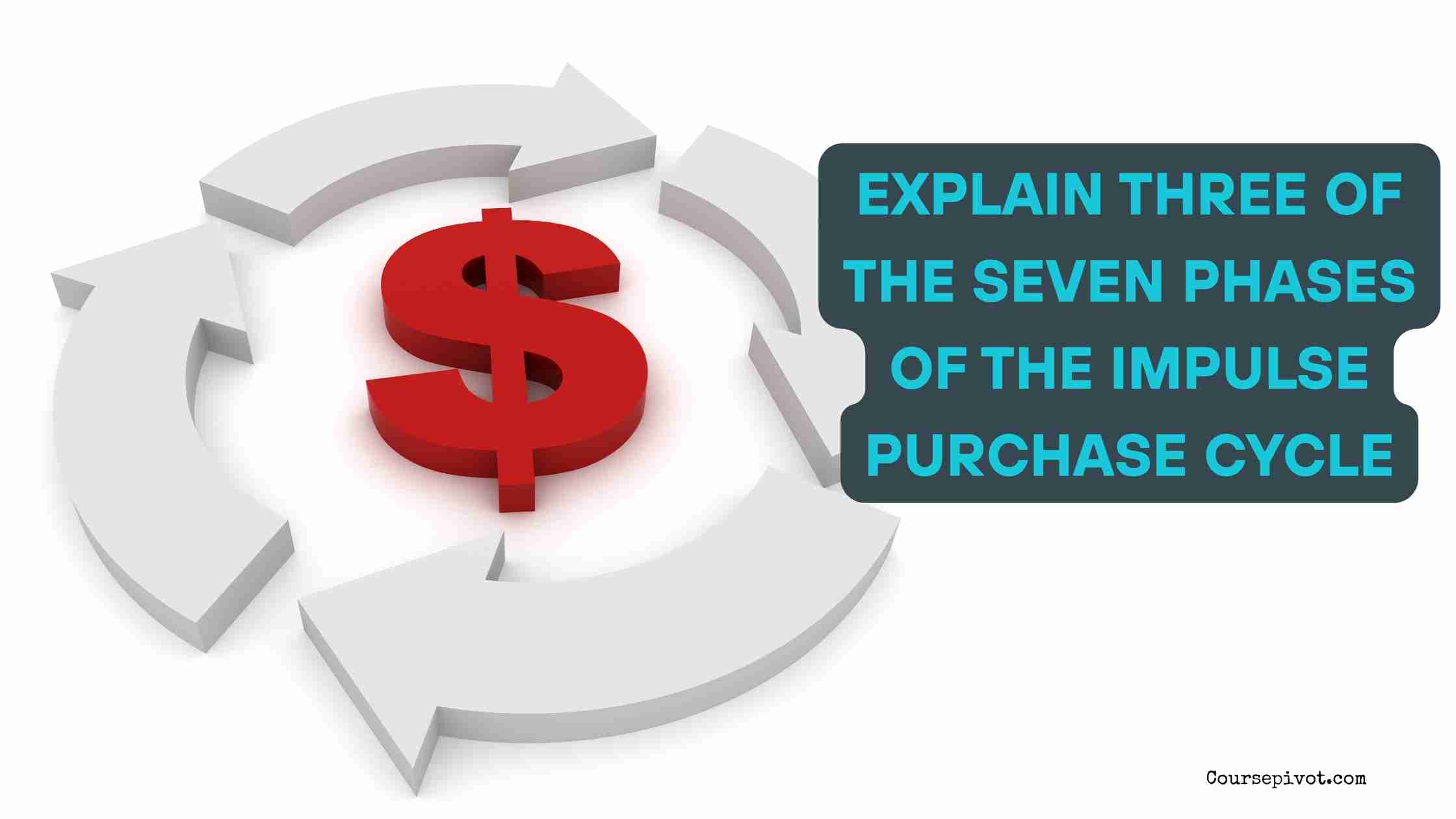
Explain Three of the Seven Phases of the Impulse Purchase Cycle
Have you ever walked into a store just to “look around” and walked out with three bags of things you never planned to buy?
We’ve all been there. That’s the power of impulse buying—a sudden, emotional decision to purchase something unplanned. But what many people don’t realize is that this behavior follows a psychological pattern known as the impulse purchase cycle.
Table of Contents
To better understand what really drives our spontaneous spending habits, let’s explain three of the seven phases of the impulse purchase cycle. These phases show how quickly emotions and triggers can turn an ordinary moment into a full-blown shopping decision.
🧠 Phase 1: The Trigger
Every impulse purchase begins with a trigger.
This is the moment that activates the idea of buying something you weren’t planning on. Triggers can be external (like a sale sign or Instagram ad) or internal (like boredom, stress, or the desire for instant gratification).
Examples of common impulse triggers:
- A bright red “Buy One, Get One Free” sign
- Seeing a friend with a cool new gadget
- Feeling anxious and wanting a dopamine boost
- Getting an email for a flash sale
- Walking past the bakery and smelling fresh cookies
Triggers are powerful because they bypass logical thinking and appeal directly to emotion.
In this phase, the idea of buying doesn’t feel deliberate. It feels like a reaction. The seed is planted—and the rest of the cycle begins.
🔄 Phase 2: Emotional Justification
Once the trigger sets the idea in motion, your brain kicks into justification mode.
This phase is all about making the potential purchase feel “smart,” “reasonable,” or “well-deserved”—even if it’s completely impulsive.
How emotional justification sounds in your head:
- “I’ve had a tough week. I deserve this.”
- “It’s on sale—I’d be losing money NOT buying it.”
- “This would make me look good at the event next week.”
- “I’ve been so productive today. One treat won’t hurt.”
This is where emotions team up with logic to make the purchase feel like a need instead of a want. Your brain works fast to convince you that this isn’t a bad decision—it’s actually a good one.
The goal of this phase is comfort, not practicality.
Once this mental green light flashes, the chances of walking away without buying drop significantly.
🛒 Phase 3: The Purchase
This is the action phase. You tap your card, hit “buy now,” or walk to the counter. The impulse has fully matured into a purchase.
What makes this phase powerful?
- It’s fast
- It’s satisfying
- It often involves minimal logical resistance
- It gives you a dopamine spike—the “reward” feeling
In many cases, buyers don’t even pause at this step. The decision made during emotional justification carries directly into checkout.
Impulse purchases rarely involve comparison shopping or deep thought. That’s what separates them from planned buying behavior. It’s quick, emotional, and often fueled by urgency or novelty.
💡 Why These Phases Matter
If you understand just these three early phases—Trigger, Emotional Justification, and Purchase—you gain powerful insight into why and how you make spontaneous buying decisions.
You can also learn how to interrupt the cycle:
- Recognize your personal triggers
- Delay your decisions by 5–10 minutes
- Ask yourself: “Would I still want this tomorrow?”
By pausing and reflecting, you regain control.
So What Are the First Three Phases of the Impulse Purchase Cycle?
The first phase is the trigger, where something activates the desire to buy.
The second phase is emotional justification, where your mind convinces you it’s a good idea.
The third phase is the purchase, where you act on that impulse.
These early steps are driven by emotion, not logic—and recognizing them is the first step toward smarter spending. Whether you’re a shopper, a marketer, or just someone curious about human behavior, understanding these phases can completely shift how you view that moment of “I have to buy this.”
Cite this article
You can copy and paste your preferred citation format below.
Martin, L. & Arquette, E.. (2025, May 23). Explain Three of the Seven Phases of the Impulse Purchase Cycle. Coursepivot.com. https://coursepivot.com/blog/explain-three-of-the-seven-phases-of-the-impulse-purchase-cycle/



